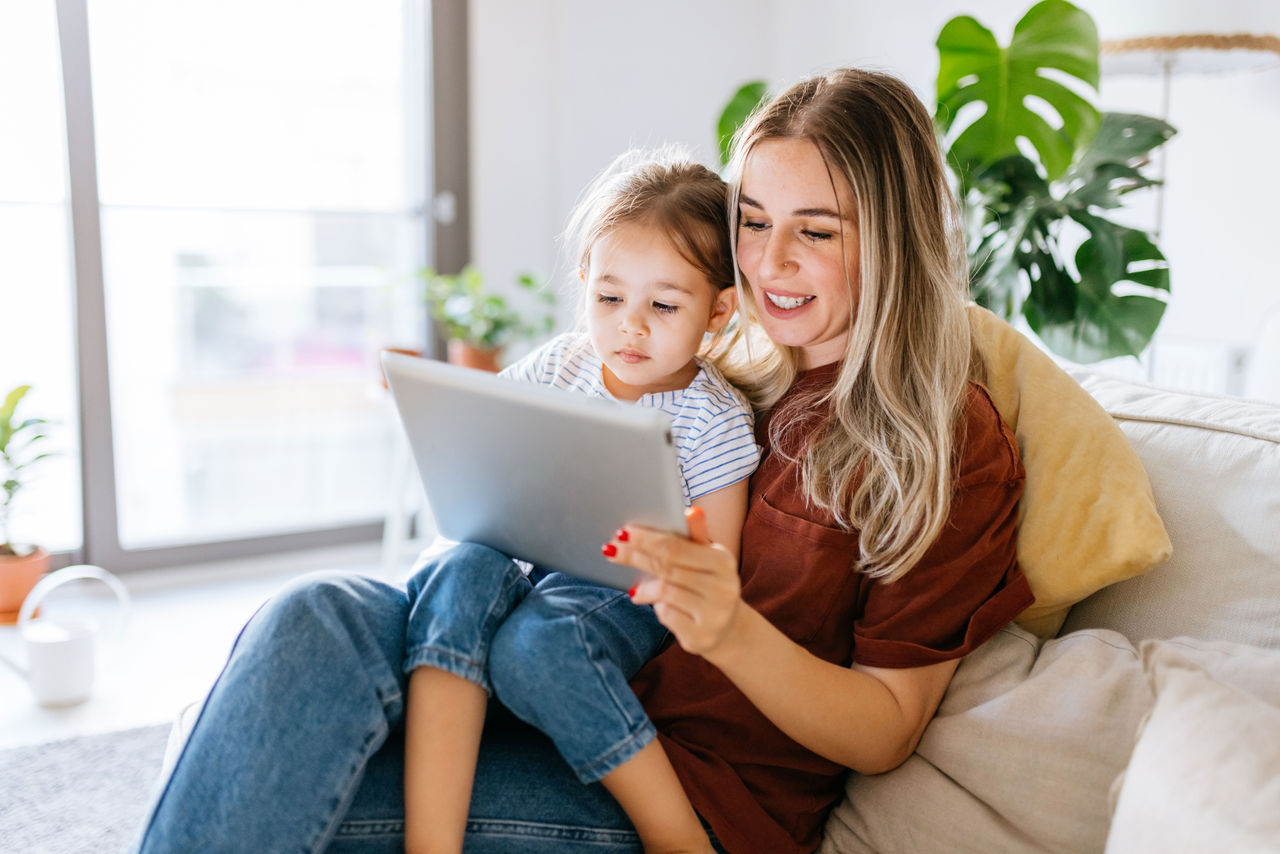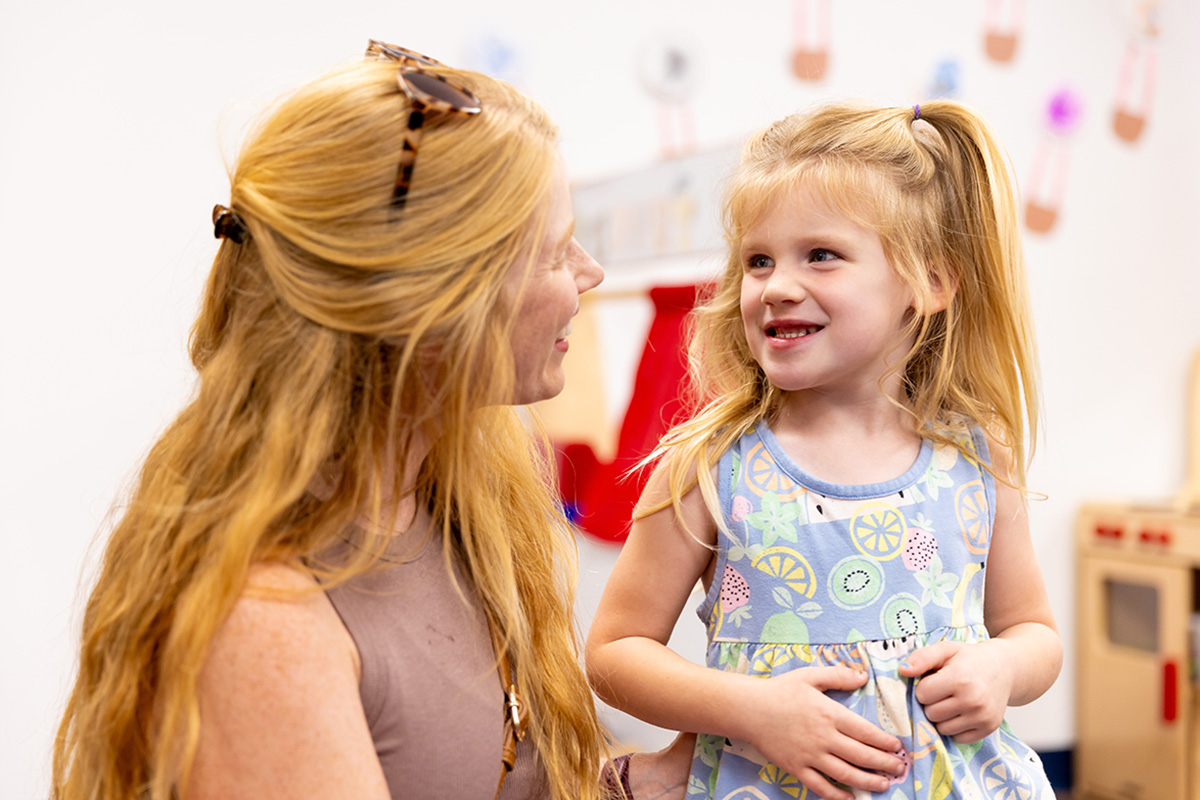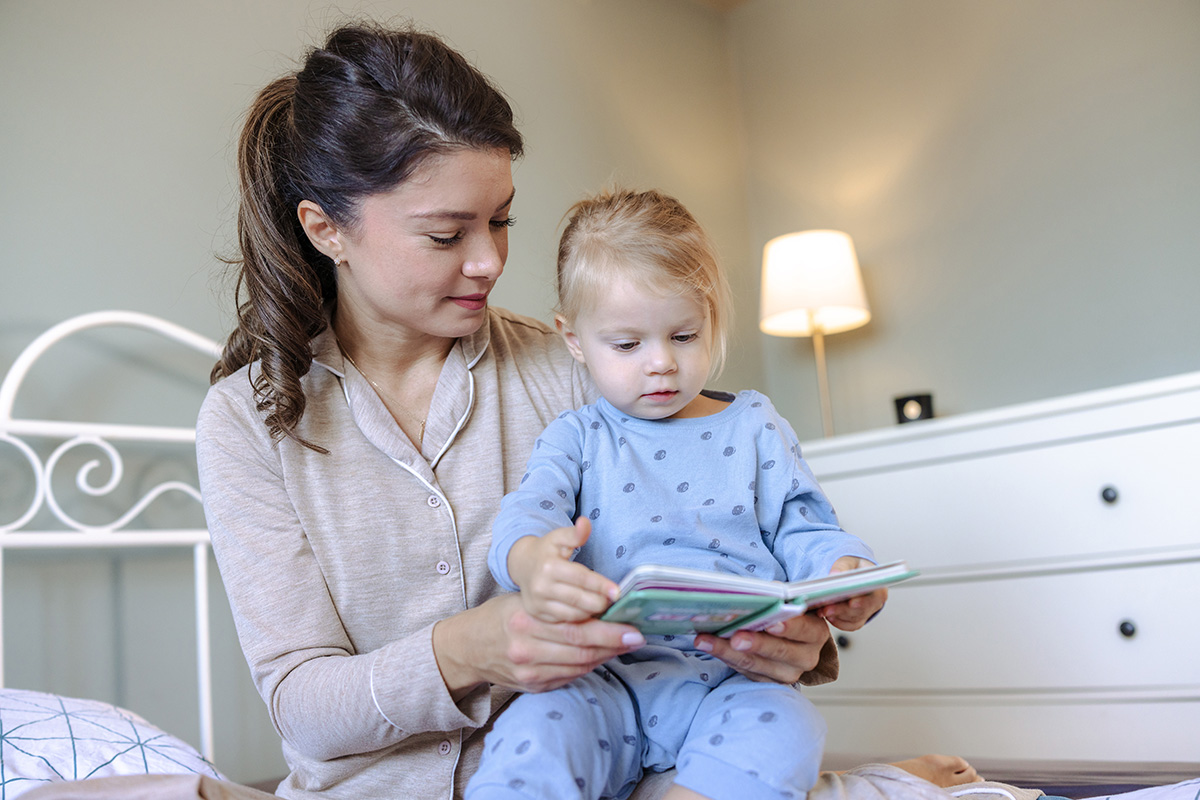Summertime is almost here, which can feel a little like a gift and a curse for families! On one hand: longer days, fewer obligations and more time for play. On the other: more unstructured hours to fill, where screen time may feel like the only thing standing between peace and chaos. If you’ve ever handed your child the tablet just so you can get through a work call or make dinner, you’re not alone.
But if screen time starts to become all the time, it’s worth thinking about the role technology plays in your child’s summer and how to create healthy digital habits without guilt.
Screens can be part of a fun and connected summer. The goal isn’t necessarily no screens ever, rather intentional, developmentally appropriate use. For little ones under age six, screens shouldn’t replace real-world exploration, social play and quality time with loved ones. For children under age two, the American Academy of Pediatrics recommends no screens except for video calls with family and friends. Kids’ brains are built by stacking blocks, splashing in water, climbing on playgrounds and, yes, sometimes watching Bluey for the 100th time. When screen time is balanced with hands-on, real-world experiences, it can support your little one’s overall development.
Tips to Manage Screen Time
- Figure out when. Before worrying about the exact amount of screen time your child can have, determine your family’s digital windows. This links screens to routines, so your little one knows what to expect. A few examples include:
- After outdoor playtime you can watch a show together
- Tablets are allowed while meals are being prepped
- Screen time happens before dinner
- Model healthy screen time use. Children emulate everything grown ups do, so make sure you practice healthy boundaries with screens in front of your little one. This could look like putting all electronics away during dinner, watching one episode of a show together and then choosing a new non-screen activity or letting them know how much longer you have to work. For example, “I have 15 minutes left to work. Once that time is up, I will put my things away and we can play.”
- Create tech-free zones or times. Figure out where and when make the most sense to be screen free for your family. Maybe there are no screens allowed in bedrooms, or all screens must be off at least an hour before bed. Make sure you adhere to the rules, too!
- Encourage alternate activities. Think about all of the activities your little one loves doing. Make time to color, read, play outside or learn new hobbies together. Take a trip to your local library, which may have a full calendar of events for the summer.
Choosing the Right Media
Not all children’s digital content is created equally. You want to look for shows that are slower paced (think Daniel Tiger’s Neighborhood vs. SpongeBob SquarePants), encourage curiosity and creativity and align with your child’s interests. The same applies to apps or games. A great resource is Common Sense Media, which provides insights and age ratings on popular shows, games and apps. Something else to consider is whether you can bring your child’s favorite show or game to life. If they love building games, break out the blocks. Or play magic xylophone at home (yes, that’s another Bluey reference …).
How Do They Respond to Screens?
Sometimes it’s not about the amount of screen time your child gets, it’s about how they respond to it. Here are a few signs your little one might need a break:
- Major meltdowns when screens are turned off (some protesting is expected)
- Less interest in other kinds of play
- Trouble sleeping or winding down after screen time
If this happens, scale back screen time gradually or add calming routines after screens like reading a book or doing a sensory activity.
Creating a Balanced Digital Environment
Sometimes screen time is the tool that helps you get through parts of the day — and that’s okay. If the tablet gives you 20 minutes to breathe, gather yourself or fold laundry, that doesn’t make you a bad parent. It makes you human.
With structure and intention, screen time can be one of many tools in your parenting toolkit instead of a source of stress. Remember, the best summers aren’t the ones with the fewest screens, they’re the ones where kids feel safe, loved and free to play in all kinds of ways.




